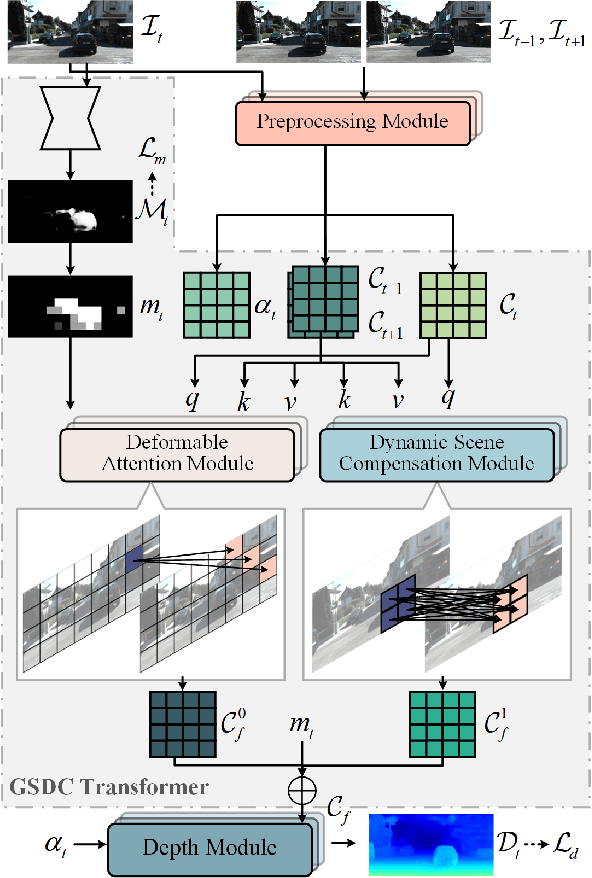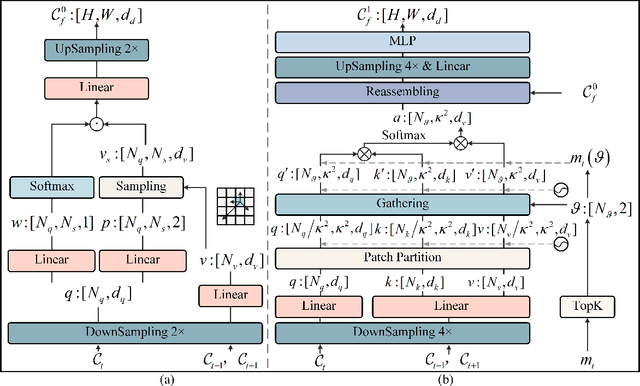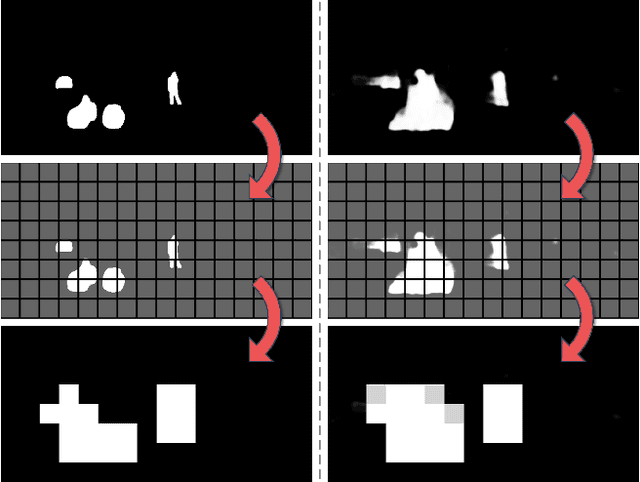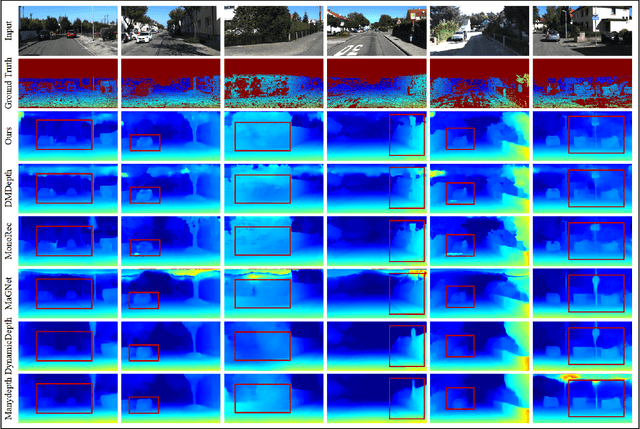Kerui Hu
A Novel Garment Transfer Method Supervised by Distilled Knowledge of Virtual Try-on Model
Jan 23, 2024Abstract:When a shopper chooses garments online, garment transfer technology wears the garment from the model image onto the shopper's image, allowing the shopper to decide whether the garment is suitable for them. As garment transfer leverages wild and cheap person image as garment condition, it has attracted tremendous community attention and holds vast commercial potential. However, since the ground truth of garment transfer is almost unavailable in reality, previous studies have treated garment transfer as either pose transfer or garment-pose disentanglement, and trained garment transfer in self-supervised learning, yet do not cover garment transfer intentions completely. Therefore, the training supervising the garment transfer is a rock-hard issue. Notably, virtual try-on technology has exhibited superior performance using self-supervised learning. We supervise the garment transfer training via knowledge distillation from virtual try-on. Specifically, we first train the transfer parsing reasoning model at multi-phases to provide shape guidance for downstream tasks. The transfer parsing reasoning model learns the response and feature knowledge from the try-on parsing reasoning model and absorbs the hard knowledge from the ground truth. By leveraging the warping knowledge from virtual try-on, we estimate a progressive flow to precisely warp the garment by learning the shape and content correspondence. To enhance transfer realism, we propose a well-designed arm regrowth task to infer exposed skin pixel content. Experiments demonstrate that our method has state-of-the-art performance in transferring garments between person compared with other virtual try-on and garment transfer methods.
GSDC Transformer: An Efficient and Effective Cue Fusion for Monocular Multi-Frame Depth Estimation
Sep 29, 2023



Abstract:Depth estimation provides an alternative approach for perceiving 3D information in autonomous driving. Monocular depth estimation, whether with single-frame or multi-frame inputs, has achieved significant success by learning various types of cues and specializing in either static or dynamic scenes. Recently, these cues fusion becomes an attractive topic, aiming to enable the combined cues to perform well in both types of scenes. However, adaptive cue fusion relies on attention mechanisms, where the quadratic complexity limits the granularity of cue representation. Additionally, explicit cue fusion depends on precise segmentation, which imposes a heavy burden on mask prediction. To address these issues, we propose the GSDC Transformer, an efficient and effective component for cue fusion in monocular multi-frame depth estimation. We utilize deformable attention to learn cue relationships at a fine scale, while sparse attention reduces computational requirements when granularity increases. To compensate for the precision drop in dynamic scenes, we represent scene attributes in the form of super tokens without relying on precise shapes. Within each super token attributed to dynamic scenes, we gather its relevant cues and learn local dense relationships to enhance cue fusion. Our method achieves state-of-the-art performance on the KITTI dataset with efficient fusion speed.
PG-VTON: A Novel Image-Based Virtual Try-On Method via Progressive Inference Paradigm
Apr 18, 2023Abstract:Virtual try-on is a promising computer vision topic with a high commercial value wherein a new garment is visually worn on a person with a photo-realistic effect. Previous studies conduct their shape and content inference at one stage, employing a single-scale warping mechanism and a relatively unsophisticated content inference mechanism. These approaches have led to suboptimal results in terms of garment warping and skin reservation under challenging try-on scenarios. To address these limitations, we propose a novel virtual try-on method via progressive inference paradigm (PGVTON) that leverages a top-down inference pipeline and a general garment try-on strategy. Specifically, we propose a robust try-on parsing inference method by disentangling semantic categories and introducing consistency. Exploiting the try-on parsing as the shape guidance, we implement the garment try-on via warping-mapping-composition. To facilitate adaptation to a wide range of try-on scenarios, we adopt a covering more and selecting one warping strategy and explicitly distinguish tasks based on alignment. Additionally, we regulate StyleGAN2 to implement re-naked skin inpainting, conditioned on the target skin shape and spatial-agnostic skin features. Experiments demonstrate that our method has state-of-the-art performance under two challenging scenarios. The code will be available at https://github.com/NerdFNY/PGVTON.
A Cross-Scale Hierarchical Transformer with Correspondence-Augmented Attention for inferring Bird's-Eye-View Semantic Segmentation
Apr 07, 2023Abstract:As bird's-eye-view (BEV) semantic segmentation is simple-to-visualize and easy-to-handle, it has been applied in autonomous driving to provide the surrounding information to downstream tasks. Inferring BEV semantic segmentation conditioned on multi-camera-view images is a popular scheme in the community as cheap devices and real-time processing. The recent work implemented this task by learning the content and position relationship via the vision Transformer (ViT). However, the quadratic complexity of ViT confines the relationship learning only in the latent layer, leaving the scale gap to impede the representation of fine-grained objects. And their plain fusion method of multi-view features does not conform to the information absorption intention in representing BEV features. To tackle these issues, we propose a novel cross-scale hierarchical Transformer with correspondence-augmented attention for semantic segmentation inferring. Specifically, we devise a hierarchical framework to refine the BEV feature representation, where the last size is only half of the final segmentation. To save the computation increase caused by this hierarchical framework, we exploit the cross-scale Transformer to learn feature relationships in a reversed-aligning way, and leverage the residual connection of BEV features to facilitate information transmission between scales. We propose correspondence-augmented attention to distinguish conducive and inconducive correspondences. It is implemented in a simple yet effective way, amplifying attention scores before the Softmax operation, so that the position-view-related and the position-view-disrelated attention scores are highlighted and suppressed. Extensive experiments demonstrate that our method has state-of-the-art performance in inferring BEV semantic segmentation conditioned on multi-camera-view images.
 Add to Chrome
Add to Chrome Add to Firefox
Add to Firefox Add to Edge
Add to Edge